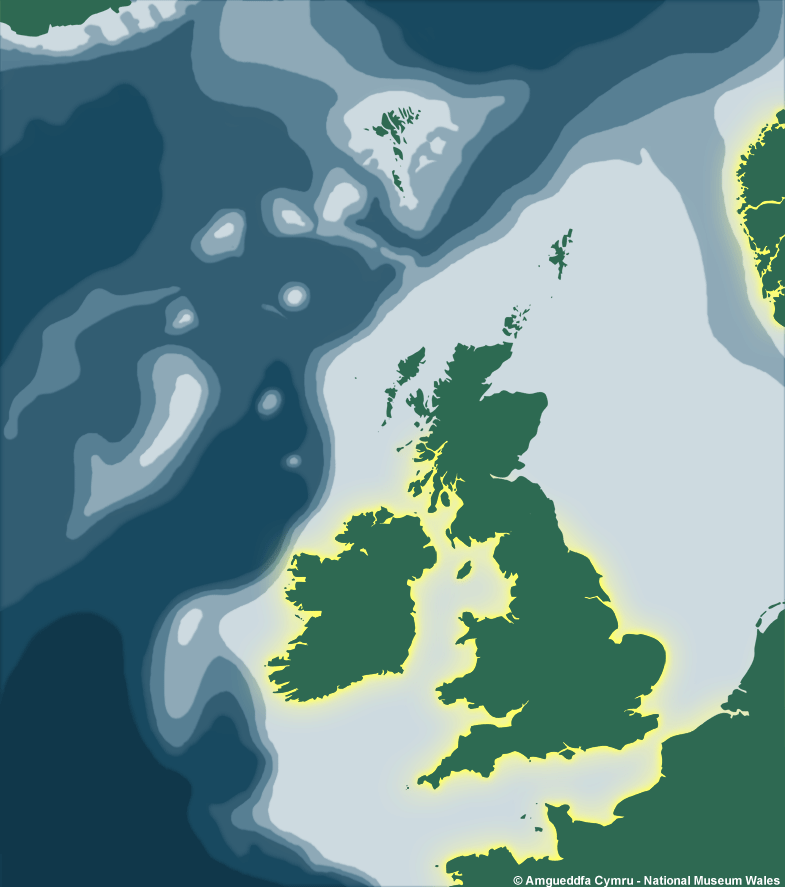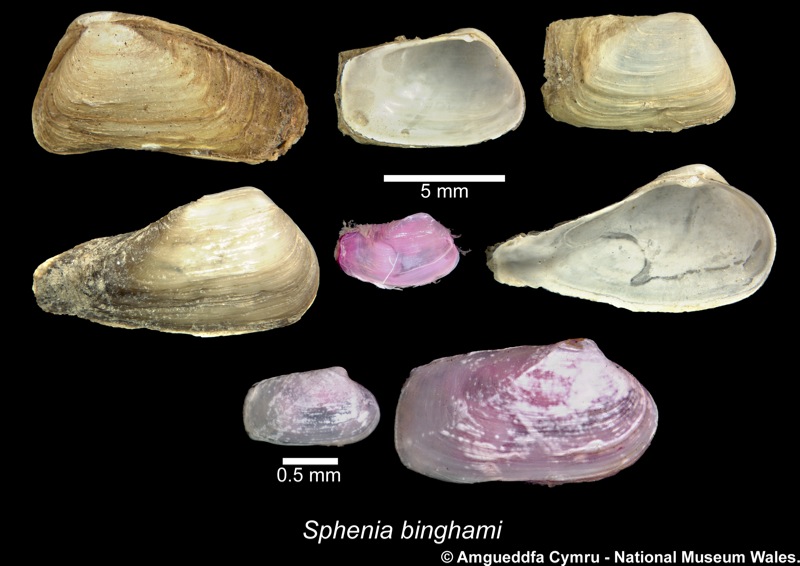Sphenia binghami Turton, 1822
Myoidea : Myidae |
| Tebble name: | Sphenia binghami Turton |
| Smith & Heppell name: | Sphenia binghami Turton, 1822 |
To size:
To 15mm.
Shell Structure:
Rather thin, brittle.
Equivalve:
Inequivalve, RV slightly more convex than LV.
Equilateral:
Inequilateral, beaks in the anterior 1/2.
Outline:
Irregular, roughly rectangular, longer than high; anterior typically sloping steeply to rounded anterior ventral margin; ventral straight or sinuous; posterior dorsal slope long, typically subparallel with ventral but also variously sloping to a broad or narrow subtruncate posterior. Posterior area defined by an angular ridge running from the umbo to the posterior ventral junction.
Sculpture:
Of co-marginal lines and irregular undulations.
Margin:
Inner margin smooth.
Ligament:
Internal on a small, shallow, projecting, roundly triangular chondrophore in LV, this extending posteriorly as a narrow shelf; RV with corresponding depression under the umbo.
Hinge:
Hinge without teeth.
Pallial Musculature:
Anterior adductor scar long, posterior scar round; pallial line wide, pallial sinus broad reaching the midline but lower arm terminating far from the posterior edge of the shell.
Periostracum:
Persistent, straw to olive brown in colour.
Colour:
Shell white.
Distribution & Ecology
Depth Range
Intertidal
Continental Shelf (to 200m)

Additional Information & Related Species
Juvenile Description
Related Species
Myoidea : Myidae
References
Listed are literature citing Sphenia binghami Turton, 1822. Reference containing the species Type Description is highlighted.
|
Turton W 1822. Conchylia dithyra Insularum britannicarum. The bivalve shells of the British Islands London. 279pp, 20pls. |
|
Yonge C M 1951. Observations on Sphenia binghami Turton. Journal of the Marine Biological Association of the United Kingdom. 30: 387-392. |
Resources
- Conchological Society
of Great Britain & Ireland
Provides resources for understanding, identifying, recording, and conserving molluscs - CLEMAM
Check List of European Marine Mollusca - MarLIN
The Marine Life Information Network for Britain and Ireland (MarLIN) provides information for marine environmental management, protection and education. It is a centre of excellence in spatially based and time-series marine biological information and supports good stewardship in the marine environment. - NBN Gateway
National Biodiversity Network's Gateway. Use it to explore UK biodiversity data, as contributed by participating data providers. - BivAToL
- MarBEF
- Malacological Society
- Unitas Malacologica
- Census of Marine Life
- MarBEF
MarBEF, a network of excellence funded by the European Union and consisting of 94 European marine institutes, is a platform to integrate and disseminate knowledge and expertise on marine biodiversity, with links to researchers, industry, stakeholders and the general public.










